The Phase Field Model
Our approach to phase separation is by phase field models introducing
the order parameter (or phase field) c with c(x)∈[0,1]
∀x∈Ω, describing the concentrations of the
species at each point. Furthermore we consider linear elastic effects
for which a strain field ε is introduced. The free
energy of the system is given by E(c,ε)=∫ψ(c)+φ(c)+W(c,ε)
dx where the double-well potential ψ is driving phase
separation whereas the interaction term φ describes interface
motion. W accounts for elastic effects due to e.g. lattice
misfits, different thermal expansion, external stresses etc.
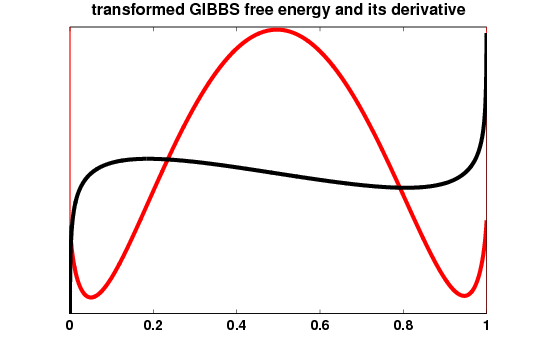 The
double-well potential ψ is modelled by logarithmic terms
in the like of ψ(c)=θ[(1-c)ln((1-c))+cln(c)]
+ Θ/2(1-c²) and has two distinct local minima once
the temperature θ drops below the critical temperature
Θ. In the theoretical analysis we focus on nonlocal
interaction terms whereas for the numerical simulations
local interaction terms are assumed as appearing in the models by
Dreyer/Müller/Böhme [1, 2]. The
double-well potential ψ is modelled by logarithmic terms
in the like of ψ(c)=θ[(1-c)ln((1-c))+cln(c)]
+ Θ/2(1-c²) and has two distinct local minima once
the temperature θ drops below the critical temperature
Θ. In the theoretical analysis we focus on nonlocal
interaction terms whereas for the numerical simulations
local interaction terms are assumed as appearing in the models by
Dreyer/Müller/Böhme [1, 2].
Analysis
Establishing existence (and possibly uniqueness) of solutions to
the continuous system is of prime importance in the theoretical
treatment of the equations and justifies a numerical search for
solutions. As mentioned before, our analytic efforts focus on systems
with a non-local interaction term. Our analysis extends further
to the non-isothermal case [3, 4].
Numerics - Fast Multigrid Methods
Following Rothe's method we first discretize in time. The spatial
problems resulting from implicit time discretization find a reformulation
as a nonlinear saddle-point problem. Space discretization is done
by P1-Finite Elements. A preconditioned Uzawa algorithm for the
nonlinear saddle-point problem leaves us with a linear saddle-point
problem and an Allen-Cahn-type problem to solve. Here we exploit
the convexity rather than (the potentially nonexistent) smoothness
of the energy functional in order to find a minimum via a descent
method. To be more precise we use a nonlinear Gauss-Seidel algorithm
as fine-grid smoother and a globally damped modification of constrained
Newton linearization for the coarse grid corrections [5, 6].
The typical structure of the solutions strongly suggests adaptive
strategies in space and time.
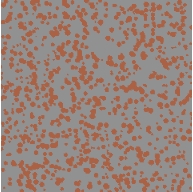
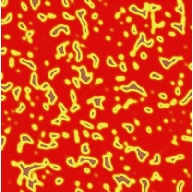
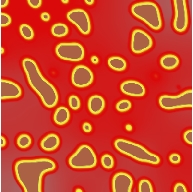
 Simulation for a AgCu alloy with realistic material parameters
Simulation for a AgCu alloy with realistic material parameters
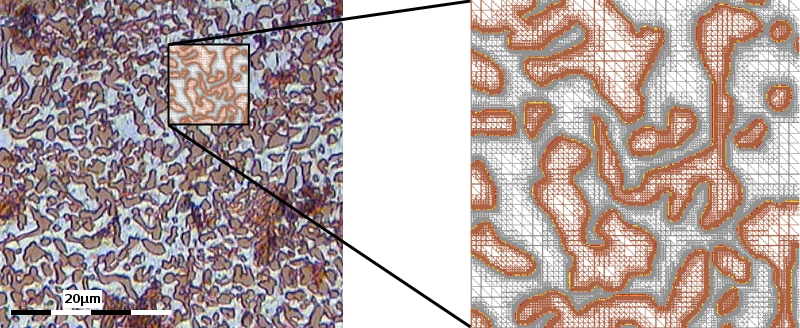 Solution and computational grid for first time step, initial data taken from experiment
Solution and computational grid for first time step, initial data taken from experiment
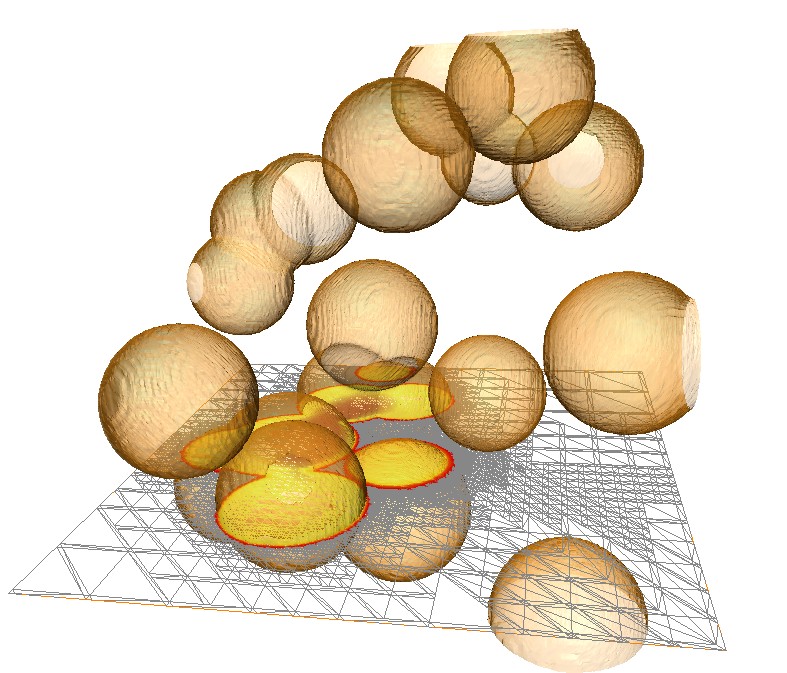 Isosurface of the solution and cross-section of computational grid for first time step in three space dimensions
Isosurface of the solution and cross-section of computational grid for first time step in three space dimensions
|



